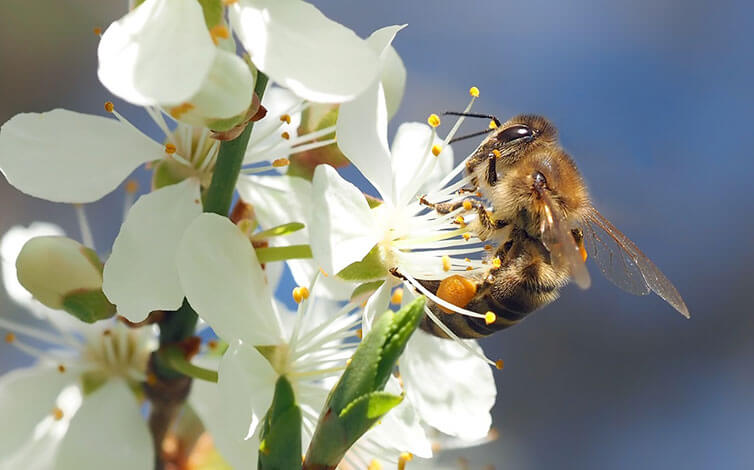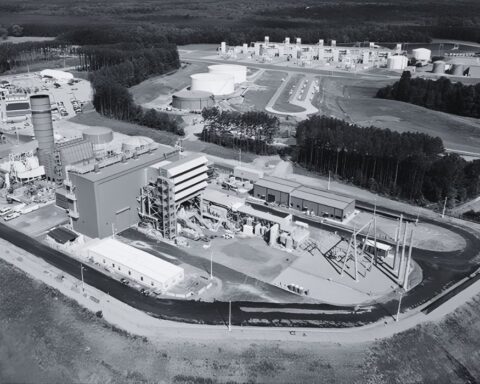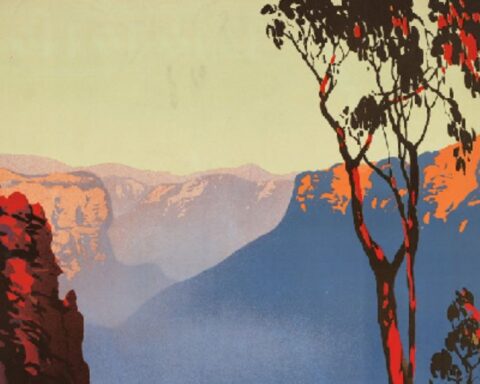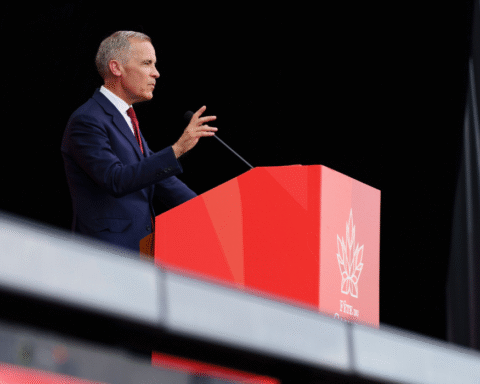Originally published on Ensia
Have you ever paid more to buy something labeled “organic” because you thought it was the right thing to do for nature? Looked for a “recycled” or Forest Stewardship Council label on a paper product? Paid a fee to visit a national park?
If so, you know what it’s like to express your appreciation and support for nature in monetary terms. Does that mean that you “put a price-tag on nature” — that you think nature’s worth is the extra dollar you paid for that organic avocado? Of course not. By taking these actions, you didn’t define what nature is worth in any sweeping, lasting way. But you did show that you value the Earth, its ecosystems, and the ability of those systems to give people food, shelter, recreation and so much more.
But too often, conservationists dismiss earnest efforts to engage more people in acknowledging nature’s value. I work for The Natural Capital Project, an organization that seeks to help people value how much we depend on nature and then factor this information into decisions about the use of natural resources. NatCap’s mission — indeed the concept of natural capital more generally — is, unfortunately, often terribly misunderstood. I’ve read many an essay and endured public talks that characterize natural capital work as some kind of dangerous effort to reduce all of nature into a dollar amount that can then be sold off to the highest bidder or otherwise used and abused. Most recently, the International Union for Conservation of Nature World Conservation Congress, which I attended in Honolulu in September, was peppered with conversations and even a presentation suggesting that the natural capital approach is a literal sell-out on “real” conservation. Nothing could be further from the truth.
I don’t blame people for getting it wrong. The words “natural capital” seem to suggest, to the skeptical, that we’re reducing nature to a puppet of capitalism. In reality, a natural capital approach is actually a way of correcting capitalism’s myopia, expanding its view. We use capitalism’s own terms to help people who may not value nature a priori to see how important it really is.
I’d like to share with you what I think about when I go to work every day to promote the natural capital approach to protecting nature.
1. The phrase “natural capital” is a metaphor.
The natural capital concept is not about money. It is about the idea that nature, if taken care of, produces a stream of benefits for current and future generations. And it’s about taking care of nature to avoid robbing future generations of those benefits. Natural capital is about headwaters, springs, sources, mothers, fathers, children, ancestors, descendants, generations, caretaking, heritage, gifts, trusts and endowments.
2. The goal of the natural capital concept is to give voice to things that are otherwise silent and invisible.
Natural capital thinking seeks to shine a light on the benefits nature provides to people and use that understanding to guide decisions that affect Earth’s lands, waters and biodiversity. These benefits are so vast, it’s impossible to name them all: food, fiber, fuel, clean water, opportunities for recreation and renewal, connection to place, strengthening of culture, inspiration, and so many other tangible and intangible things that make life possible and worthwhile.
Talking about — and sometimes trying to quantify — the benefits nature provides to people does not diminish or place limits on those benefits. Nor does it suggest that benefits to humans are the only benefits that matter. It simply makes it possible to bring them into conversations from which they too often are absent.
A case in point: At the IUCN congress, Ulalia Woodside, executive director of the The Nature Conservancy’s Hawai’i chapter, relayed how an assessment of natural capital helped transform the land management plan for a large tract of land on Oahu to explicitly account for the health and well-being of the lands, communities, and cultures in their management decisions. At the time of the assessment, Woodside worked for Kamehameha Schools, the state’s single largest private landowner. For many years, Kamehameha Schools supported their educational programs by managing their extensive landholdings to maximize financial returns. In a time of transition, they were looking for ways to broaden their definition of wealth to include the multiple values that flow from the land. They collaborated with NatCap to quantify some of those values and developed new approaches to include others. This natural capital approach gave Kamehameha Schools a practical way to include values in their plan that were previously intangible, in addition to maintaining positive financial returns.
3. Natural capital assessments support democratic decision-making.
Many of us intuitively recognize that we depend on nature as the source of our well-being. It’s a beautiful idea, but it’s also vague — and intuition is wobbly ground on which to base business and public land-use decisions. Using science and data, in addition to personal values, to justify decisions is part of a fair, transparent democratic process. By revealing and communicating the specifics of what nature is doing for us, we hope to make it easier for nature to become a primary consideration in all decisions.
4. Natural capital assessments occasionally involve monetary valuation.
In some cases, valuing benefits from nature in monetary terms can help us connect to people outside the conservation choir, but natural capital assessments are more typically about showing relative values and unveiling hidden trade-offs.
Take mangroves as an example. Many people still think of them as swamplands that should be drained for development. Imagine going into a meeting with a national minister of finance to convince her to support protection for local mangroves. You would be more likely to get her attention if, in addition to talking about saving mangroves just for the sake of mangroves, you could also talk about how the mangroves benefit local fisheries and protect lives and properties by lessening the force of wind and waves during storms. If you could also back up those claims with numbers — pounds of fish, say, or higher incomes, you’d be much more likely to win her over. And your facts might also help developers, fishing communities, tourism operators and all citizens find common ground.
Some worry about valuing nature in monetary terms because any estimate is necessarily an underestimate. However, thinking of decision-makers as automatons looking blindly at balance sheets and maximizing monetary returns is misguided, at best. Not once, in nearly 40 cases in which NatCap has been involved, has any decision-maker made a choice based solely on monetary calculation of benefits provided by nature. Most of the time, decision-makers haven’t even wanted monetary valuation. Instead, they have wanted to know how best to balance the sustainable use of their ecosystems for the benefit of their people. They’ve wanted to know where to invest limited conservation and restoration resources to maximize improvements in water quantity and quality. They’ve wanted to know where coastal habitats protect people and property from sea-level rise and storms. They’ve wanted to know how to allow for development, to pull people out of poverty, while not degrading the nature that makes their place home.
5. People and nature are part of the same system.
Together, we are the biosphere. Care for nature is care for ourselves, and care for ourselves promotes care for nature. Jane Goodall, beloved for her extraordinary work with chimpanzees, recognizes that the best way to care for chimps is to make sure the people sharing forests with them don’t have to choose between feeding their children and degrading habitat. Even though she focuses on a single species, Goodall knows that we need to address the whole system. We are all in this together.
After the IUCN meeting, I fled the windowless beehive of the convention center to escape to the peace of wild things. I hiked, with my husband and two kids along a dusty trail clinging to the edge of a dramatic ridge above a rugged, wave-swept rocky shore along Oahu’s Ka’ena Point Natural Area Reserve. My boys forgot how hot and tired they were when they discovered fluffy wedge-tailed shearwater chicks in nest after nest in the seabird refuge at the end of the trail. We marveled at the endangered monk seals resting at the water’s edge. We finished the day off watching green turtles body surf in turquoise waters.
I learned later that it was the installation of a 2,000-foot (600-meter)-long predator-proof fence costing US$290,000 that allowed the shearwaters, albatrosses and other seabirds to begin to make a comeback after being decimated for decades by dogs, cats, mongooses and rats. The reserve attracts more than 50,000 visitors a year, both tourists, like us, and locals.
Does knowing the cost of the fence or the number of people who now visit the reserve reduce the reserve’s value to only those measures? Emphatically no. But those numbers can — and undoubtedly will — help justify public payments for managing the reserve into the future and bolster arguments for proactive efforts to prevent the spread of invasive species elsewhere.
Like most of my colleagues around the world, I care deeply about species and ecosystems and believe that we should do all we can to protect them. One critical thing we can do is embrace a diverse portfolio of strategies. This includes setting aside protected areas such as Hawai’i’s newly expanded Papahānaumokuākea reserve, now the largest protected area in the world. It includes building (and mending) fences to manage invasive species at Ka’ena. It includes alleviating poverty to improve the lives of people and chimpanzees in Tanzania. It includes getting our kids out onto hot dusty trails. And it includes the explicit exploration and articulation of the rich and diverse ways nature supports and fulfills human life. Our well-being, and that of all living things, depends on it.







